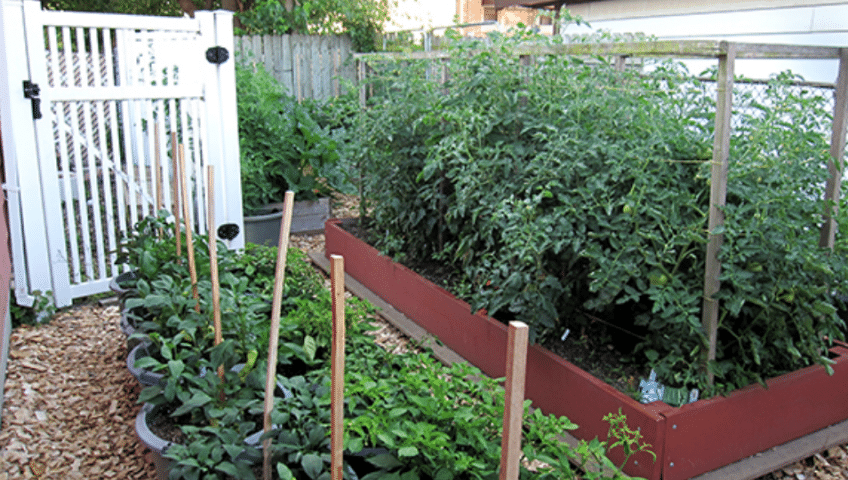
When to start tomato seeds in Calgary?
Tomatoes are some of the most nutritious of the fruit and vegetable family and they can be grown quite easily in Calgary’s climate. It is interesting and fun to grow your own organic vegetables in Calgary and we all know they typically taste better than anything you can buy in a store. A tomato is a fruit you can grow in Calgary with just a little TLC. Knowing when to start tomato seeds in Calgary is key to making sure your plant is ready to move outdoors in spring. The key to a good yield from your tomato plants is to make sure they are planted at just the right time in spring. If you do not want to buy your tomato plants in pots from your local garden centre then you may want to consider starting your tomatoes from seed.
Use a good quality soil for your tomato seeds.

It is very important to start your tomato sees off right and the best way to do that is to use a good quality soil. The best soil mixes include vermiculite or perlite, peat moss and organic garden soil. You can create a good mix of these three components at home or you can buy a ready mixed soil from your local garden centre. The easiest way to obtain the soil is to buy it already in the seed pod in the container. Once you have your soil ready you can fill small seed trays or pods with the soil. Plant the tomato seeds about a quarter inch below the surface.
Choose a proven tomato seed
It goes without saying that you should make sure you choose a proven tomato seed. Proven winners can be found by searching varieties on the internet or visiting your local garden centre and speak to someone there who knows their tomatoes. You can choose from many tomato types including large beefsteak tomatoes or cherry tomatoes. Cherry tomatoes produce more fruit obviously but they are smaller. The higher amount of single fruit means you can almost always check on your plants and have a fresh tomato ready to enjoy. Young children especially love picking cherry tomatoes. Tomato seeds are not expensive and some great varieties can even be found on Amazon.ca
Tomato seeds germinate and grow best under grow lights.
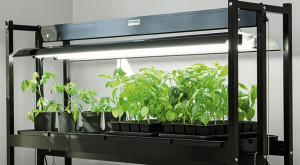
Having a grow light gives your tomato seeds a great head start and the grow lights will provide not only nurturing light to your tomato plant but a warm soil will encourage your seed to sprout quickly. So when to start tomato seeds in Calgary? Tomato seeds should be started in late February or early march. Starting your tomato sees at this time will give them a great head start for spring planting outdoors. When to start tomato seeds in Calgary also depends on whether you plan to use grow lights or not. Grow lights are recommended even if you have a fairly sunny window because the daylight hours in Calgary are so short in winter and spring. You can purchase grow lights at many garden centres and other suppliers in Calgary. It is best to keep your grow lights on for a minimum of 18 hours. Keep your grow lights about 4 to 6 inches from the soil. Tomatoes grow best when the temperatures is around 80 degrees Fahrenheit. You may want to cover your tomato seeds for the first few days to retain the moisture in the soil.
When to transplant your tomato sprouts to containers
Once your seeds have germinated and reached a height of 1 1/2 inches its time to transplant your tomato sprouts to containers. This is the most enjoyable part of your tomato growing experience. You now have a living plant to tend to and watch grow! Transport your tomato sprouts to 6″ pots. You will not need to transplant them bare root, rather you can simply take the whole soil mass out of the container and transplant directly into the new soil in the new pot. Try not to disturb the root system if at all possible. Continue to place your tomato plants under grow lights and keep the light on them for 18 hours. The best temperatures for tomato plant growth is 72-80 degrees in the daytime and 65-70 degrees in the evening.
Transplanting your tomato plants to the garden
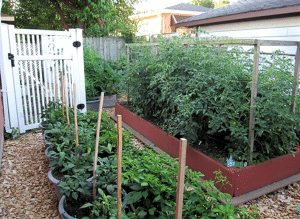
You could choose to grow your tomatoes in planters or pots but they do now best when their roots are allowed to drain properly and in soil where their roots can grow deep. Modern patio ideas do include some attractive deep planters you can consider. Tomatoes do best when planted in deep well draining planters or planted right into the ground. Transplanting your tomato plants to the garden should only be done once you are sure there will be no risk of frost. In Calgary, the best time to plant your tomato plants is after the May long weekend. This time of year usually signals the end of frosty nights Calgary. If you think a frost may occur after this you can cover your tomato plants with plastic or a tarp making sure not to damage the foliage. You can plant your tomato plants amongst other trees and shrubs but make sure the tomatoes are not crowded in you shrub beds and that they will receive enough light. Landscaping in Calgary often includes a productive vegetable and/or fruit garden.
If you read when to start tomato seeds in Calgary you will know that February and March are the best months to do this. If you planted your seeds at this time your tomato plant should be over 12 inches tall and ready to plant in your outdoor garden. Make sure to prepare your garden soil properly and don’t just plant your tomatoes in old silty or poor soil. To enrich your soil and prepare it for planning loosen up the soil first with a pitchfork. You will need to dig the soil area about 16″ x 16″ and 18″ deep. If your soil has poor drainage you can add some pea gravel at the bottom of the hole. Enrich the soil by adding some good quality garden mix that contains compost, peat moss and vermiculite or perlite. Plant your tomato plant with the top of its root ball about one inch below the surface and make sure to pack the soil very well around the root ball. Packing the soil with help the plant retain moisture and make the plant stock sturdier in windy conditions. Stake your tomato plant or add a tomato ring. A stake or tomato ring will help keep the plant upright and less stressed. This will be especially helpful once the tomato begins to bear the heavy tomato fruit. Fertilize your tomato with a good quality tomato fertilizer. You may need to do this as much as once a week but be careful not to over fertilize.
Enjoy your fresh tomatoes by mid to late July all the way up until late September. We hope you enjoyed reading when to start tomato seeds in Calgary. Enjoy!

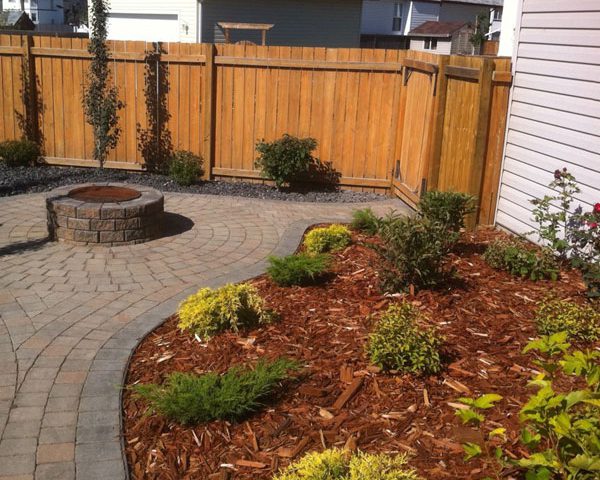
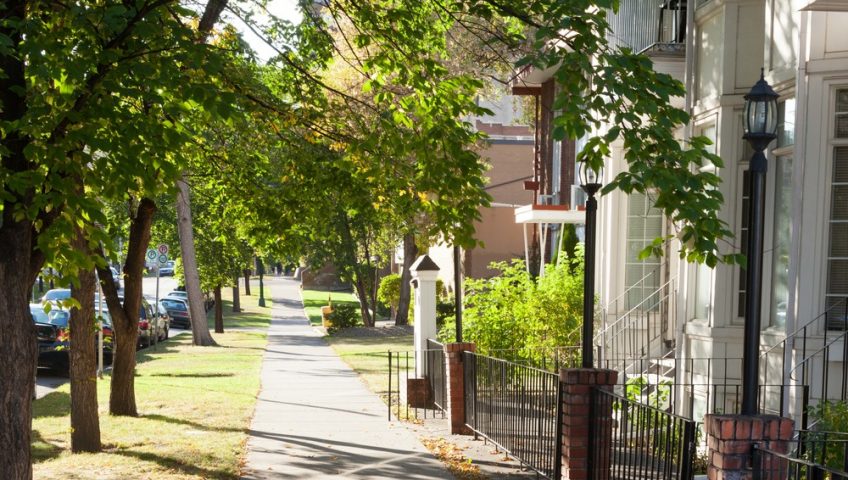
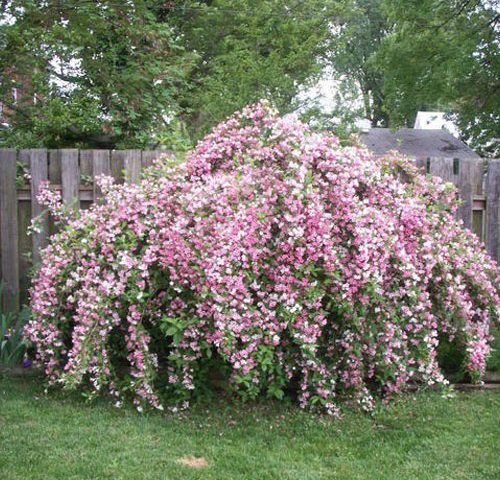
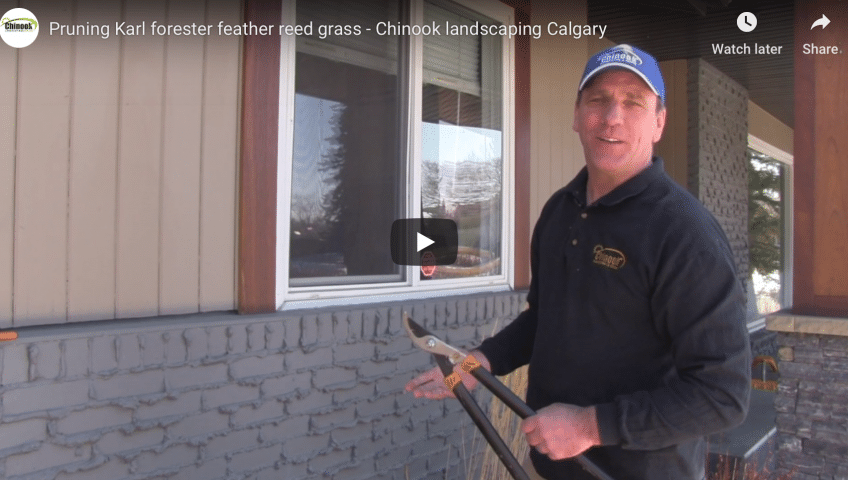
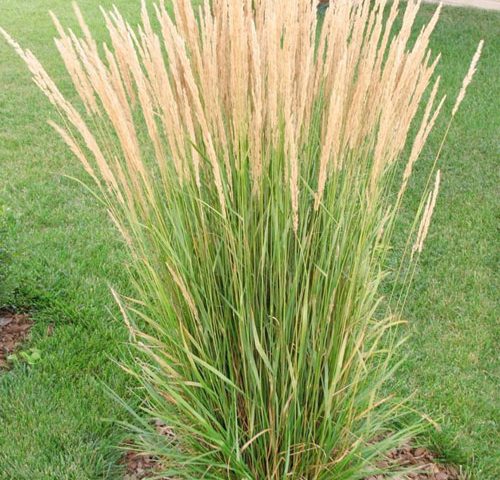
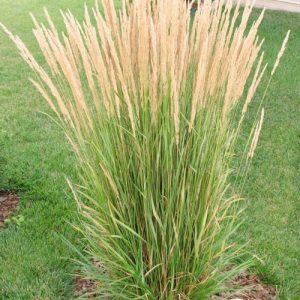
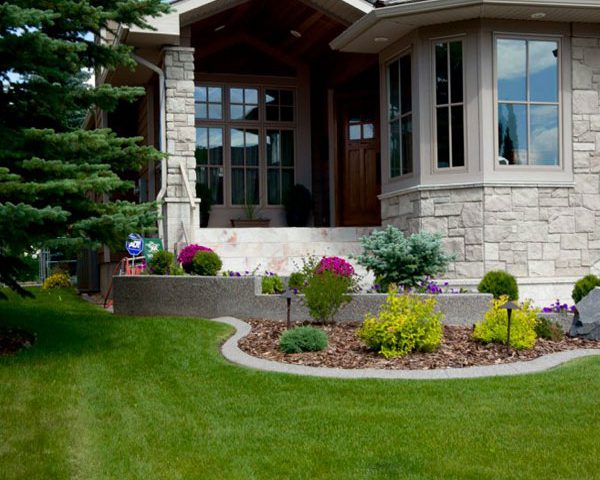
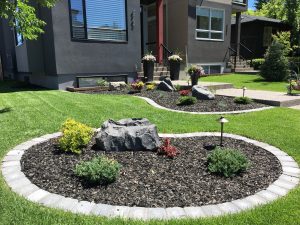
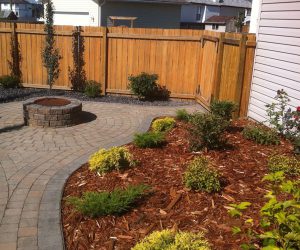
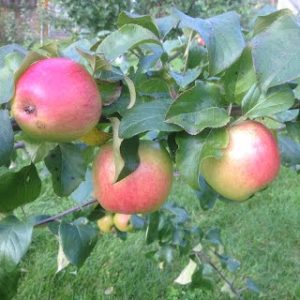
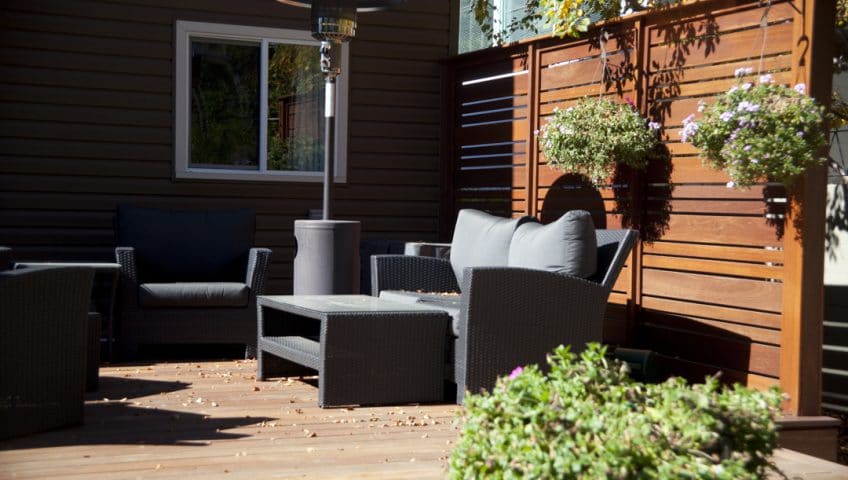
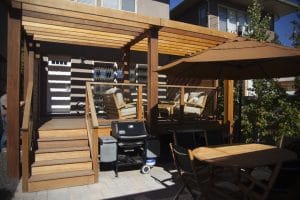 Wood features are a great way to soften the look of your landscaping.
Wood features are a great way to soften the look of your landscaping.